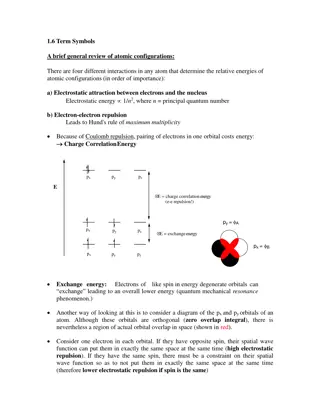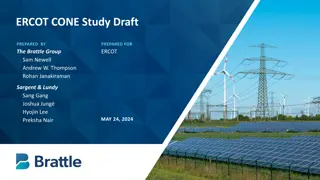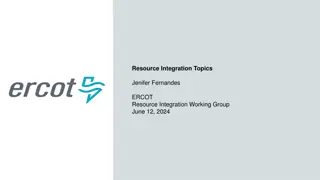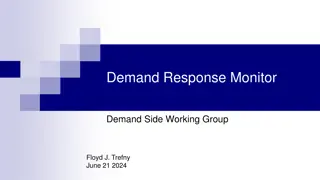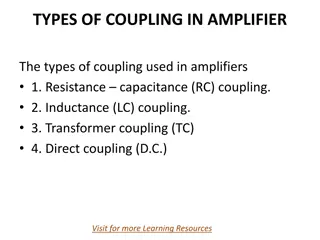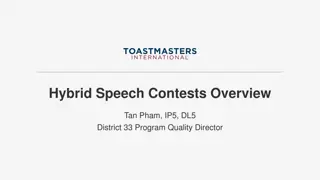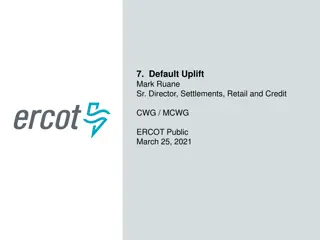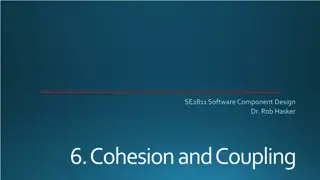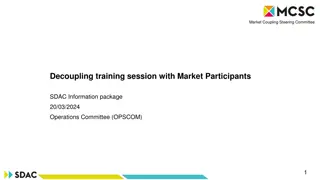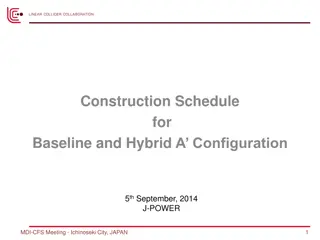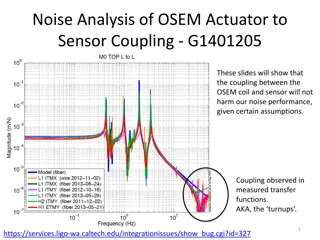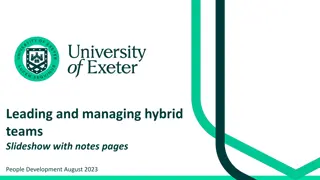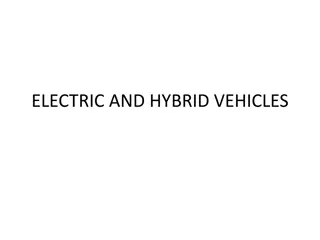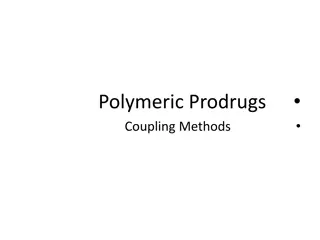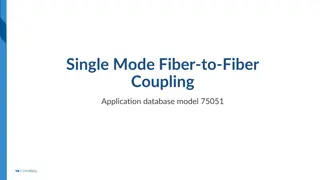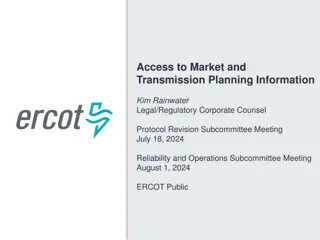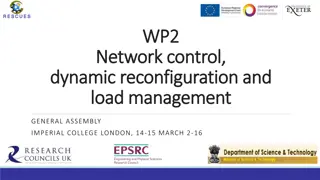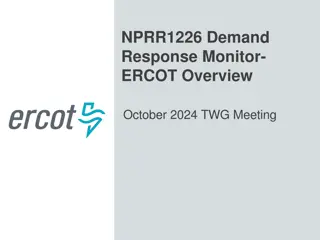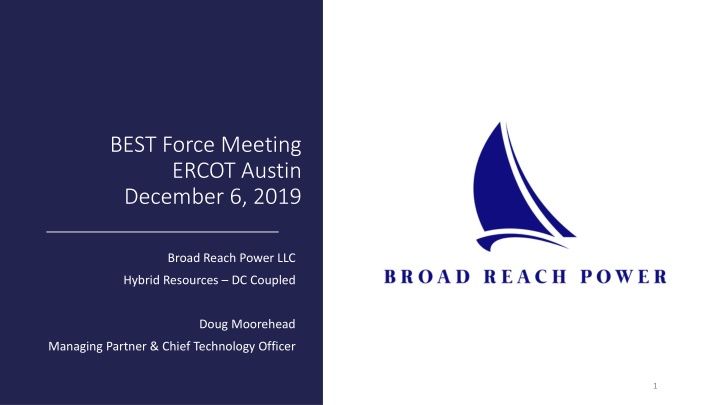
ERCOT Guidelines for Hybrid Resources and DC Coupling
key points from a meeting discussing ERCOT guidelines for hybrid resources and DC coupling, including topics like DC/DC architecture, UL 1741 SA battery inverter guidelines, and intermittent renewable resource performance exemptions. Learn about the benefits of DC coupling in energy storage and solar systems, as well as proposed guidelines for UL 1741 SA battery inverters. Consider whether existing performance exemptions should apply in the context of intermittent renewable resources like solar with battery storage.
Download Presentation

Please find below an Image/Link to download the presentation.
The content on the website is provided AS IS for your information and personal use only. It may not be sold, licensed, or shared on other websites without obtaining consent from the author. If you encounter any issues during the download, it is possible that the publisher has removed the file from their server.
You are allowed to download the files provided on this website for personal or commercial use, subject to the condition that they are used lawfully. All files are the property of their respective owners.
The content on the website is provided AS IS for your information and personal use only. It may not be sold, licensed, or shared on other websites without obtaining consent from the author.
E N D
Presentation Transcript
BEST Force Meeting ERCOT Austin December 6, 2019 Broad Reach Power LLC Hybrid Resources DC Coupled Doug Moorehead Managing Partner & Chief Technology Officer 1
Key Points up front 1. DC/DC architecture variants 2. Treat DC coupled resources as hybrid asset single point of interconnect and single dispatchable asset 3. UL 1741 SA battery inverter guidelines related to Intermittent Renewable Resource ( IRR ) performance exemptions 4. Emergency conditions for DC coupled hybrid resources 5. Telemetry availability and battery State of Charge ( SOC ) 6. Grid Forming/Weak Grid 2
DC coupling: energy storage and solar *image source: Dynapower public file 1. Hybrid resource: either asset can be tied directly to the inverter DC bus or be controlled by the DC/DC power converter 2. Architecture will most likely be defined as the higher utilization asset be tied directly to the inverter DC bus to minimize electrical losses and maximize roundtrip efficiency 1. Example: 100MW battery with 20MW PV: DC coupled PV architecture 2. 100MW PV with 20MW battery: DC coupled battery 3. In general, DC coupling is 16% better : 8% improvement in CapEx costs and 8% improvement in roundtrip efficiency and capture of DC clipped energy (compared to equivalent AC connected co-located resources. 4. No electron is wasted in either electrical architecture no clipped energy losses 3
UL 1741 SA battery inverter proposed guideline 1) UL 1741 SA Voltage and Frequency ride through shaped like IEEE 1547 2) Required minimal duration before the inverter can fault, disconnect, or recover 3) ERCOT should be able to develop 10, 100, 1000MW UL1741-SA standard grid interface models 5
Should existing IRR performance exemptions apply? 1. Intermittent Renewable Resource IRR ? 2. A Generation Resource that can only produce energy from variable, uncontrollable Resources, such as wind, solar, or run-of-the river hydroelectricity. (ERCOT definition) 3. Variability performance concerns/challenges: 1. Large and sudden ramps 2. Intermittent energy supply 3. Capacity uncertainty Example: 100MWac solar facility with 50MW DC coupled battery (undefined MWh). In other markets, this is referred to as a solar facility with 50% capacity factor on energy storage. Can ERCOT treat some percentage of capacity same as standalone storage? 6
Emergency conditions: How much capacity can be delivered by a hybrid resource? (example) 1. 115MWdc solar plant 2. 10MW DC coupled battery 3. 100MWac interconnect limit 4. What can the facility deliver to the grid during the emergency assuming the PV array is 105MW during the interval? Even if the interconnection limit is waived, output will be limited to 100MWac POI output. Overload capacity on utility scale inverters is limited to seconds to single digit minutes of overload capacity. The AC connected power converter will need to be electrically sized for the overload condition to achieve over the interconnect limit, as well as all down stream medium voltage and high voltage transformers and switchgear. 7
DC coupled hybrid plant: Telemetry 1. Consider the plant 100% digital 2. Any measured or recorded condition or state of operation is available worldwide 1. Common for plant output to be available locally or centralized location 3. Readily interface into existing SCADA and cybersecurity platforms and control 8
Grid Forming/Weak Grid 1. Grid forming / Weak grid a. We are capable to transfer 100MW solar + storage into island grid mode during grid emergency shut down and also restore the system in fast fashion which gives the grid operator additional flexibility how to manage highly penetrated renewable challenges in grid. This same would apply to intermittent situations when wind sub station may trip off during storm. 2. Model for a hybrid resource: a. We have battery power system model available which includes all storage aspects in it SOC, active power, reactive power. ERCOT has not requested that level of detail before but we have it available if needed 9
Thank you! Doug Moorehead Managing Partner and Chief Technology Officer 757-328-3309 dmoorehead@broadreachpower.com 10


